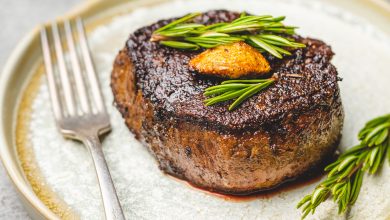
Is Starvation Mode Real? How Does Adaptive Thermogenesis Work?
You might have heard the term “starvation mode” before in passing, or possibly mentioned by someone in relation to too little food consumption. And while the term itself may sound shocking enough, even more surprising is the fact that the phrase refers to the body entering a state where it can actually gain weight by not eating! It’s rational for anyone to question the legitimacy of this term.
In this article, we’ll take a look at starvation mode and explore the truth associated with this strange process and how it can affect your body weight, if at all.
What Is Starvation Mode?
Is starvation mode real? As it turns out, yes. Starvation mode, or adaptive thermogenesis, is a very real body process and can be boiled down to your body substantially slowing down your metabolic rate to accommodate for too-little calories being consumed.
Your body reacts to calories consumed and burned throughout each day. Calories are the unit of measurement that records energy required by your body to keep you and your vital organs running as they should. Essentially, if the amount of calories you consume is equal to the number of calories burned, you shouldn’t have much trouble maintaining your weight. Contrastingly, if you consume more calories than you burn, you can see weight gain due to your body storing the extra calories it doesn’t need for later energy use. Adaptive thermogenesis occurs when not enough calories are consumed to support energy needs. The body anticipates this by slowing down the rate at which calories are burned to conserve energy.

How Your Body Consumes and Burns Calories Throughout the Day
Energy storage, use, and consumption occur throughout the day in your body, most of the time without you noticing it. How your body processes calories throughout the day can be broken down into four different ways:
- Thermic Effect of Exercise (TEE) – This type of calorie-burning refers to the energy used and expelled during exercise and physical activity.
- Basal Metabolic Rate (BMR) – Even while you’re sitting and doing nothing, your body is burning calories to keep internal processes going, such as your heartbeat and breathing.
- Non-Exercise Activity Thermogenesis (NEAT) – When you make slight movements, such as blinking or yawning, this consumes calories and falls under the NEAT category.
- Thermic Effect of Food (TEF) – Even while just digesting your food, you’re burning calories. When this happens, it’s known as the thermic effect of food.
When you’re looking to lose weight, all of these combined energy consumption processes contribute to weight loss.
What Science Says
There have been extensive studies done on the effects of thermogenesis on the body. One published paper in 2007 on studies by researchers took a close look at thermogenesis in three ways:
- Instability of Body Weight – This is how the body reacts to an uncontrolled balance of negative energy being maintained. It was shown in the study that regaining of weight can follow large energy deficits. This type of instability is often referred to as the “yo-yo effect.”
- Weight Loss Unsuccessfulness- Studies represented in the research noted the state of thermogenesis as contributing to weight loss resistance by the body.
- “Protective Mechanism” – Studies also took a look at the body’s response to perceived environmental hazards, such as lipid-soluble properties.
It was concluded at the end of the study that, “greater than predicted decrease in energy expenditure may happen in response to weight loss in obese individuals. The extent to which this may represent a thermogenic defect is debatable, but its ability to interfere with weight loss seems to be much clearer.”
How to Avoid Thermogenesis
So what can be done to avoid your body hanging on to those additional calories? There are a few things that can be done to promote a healthy metabolic rate that can also be conducive to weight loss:
- Protein Consumption – High protein consumption not only helps to curb your appetite and keep you feeling fuller for more extended periods, but it has also been shown to help with metabolic increases. Muscle mass tends to be better conserved with protein intake, which can then help prevent a slowdown with metabolism. This point is due to the body not needing to resort to muscle-breakdown for the energy that it requires.
- Weight Lifting – Strength training and other “resistance exercise” such as lifting weights have been shown in studies to balance metabolic rates and promote weight loss.
- Diet Change – It has been shown with some dieters that when they take days off from diet restrictions and then go back to their diet, it can actually promote weight loss. Sometimes mixing in breaks of a few weeks can also help; however, it’s vital that healthy eating habits are still maintained.
- Caloric Balance – By stringently tracking your outgoing calories being burned during exercise, through physical movement, and while at rest, and then monitoring those against the calories you’re consuming, you have a higher chance of finding and achieving metabolic balance.

So Is Starvation Mode Real?
To answer the previously asked question – yes, starvation mode as it presents itself through adaptive thermogenesis is real. The term “starvation” might be a little drastic to explain what’s really happening, however. Your body isn’t switching to storing all of your calories consumed out of fear of starvation. The slow down of your body’s processing of calories also isn’t something that happens overnight; it’s more of a build-up and change over time. Essentially, when your caloric intake and expulsion isn’t balanced consistently and accurately, it can lead to a metabolic slowdown. When your metabolism is slowed down, you can then experience weight-loss plateaus or weight gain.



